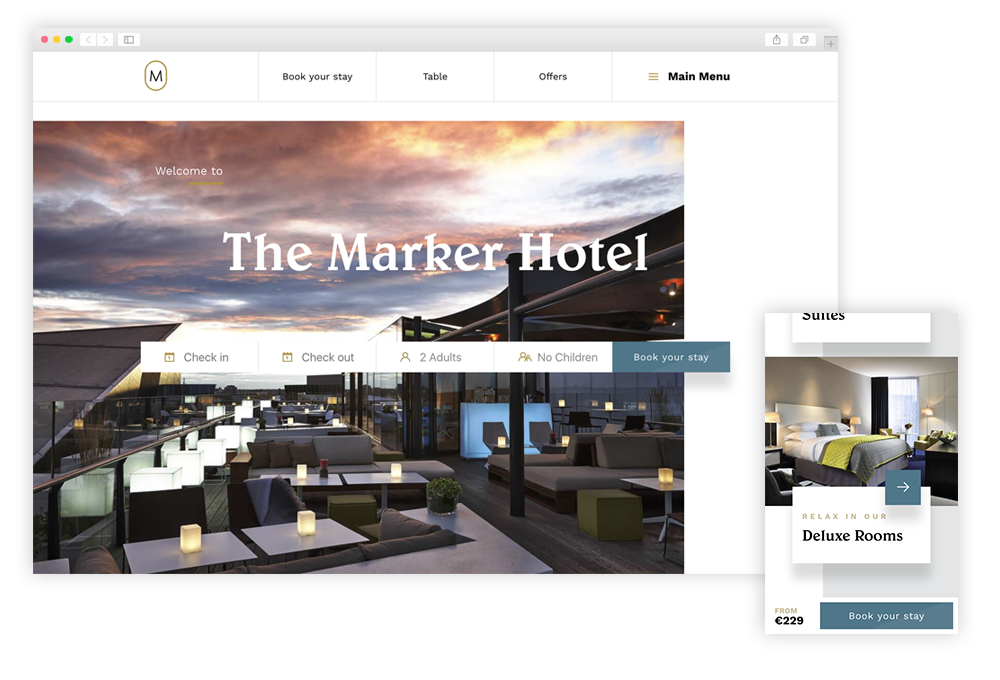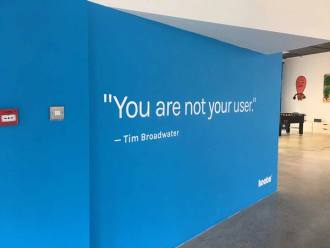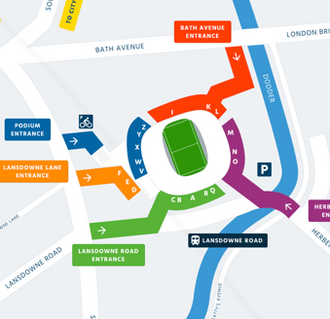If there’s one number the average independent hotel or hotel group cares about in 2018, it’s the percentage of their total bookings received direct rather than through online travel agents (OTAs) and other affiliates.
Anyone familiar with the sort of charges associated with those organisations (15-30% in most cases) won’t need any further evidence for that claim, but for what it’s worth we hear the same in client meetings on a regular basis.
That 30% taken in commission represents a huge impact on margin of the type that could only be delivered via significant investment in the property itself or in marketing - the latter being of dubious efficiency in a world of online reviews and ‘social proof’. So whilst it is of course a fantasy to argue that any hotel could ever take 100% of bookings direct, the larger that number gets the more margin and more profit the hotel or hotel group makes.
Here’s some ways to make that happen without going any further than your own online presence.
1. A clear call to action
If you want someone to book direct online, make that obvious and make it easy. Too many hotel group sites make the mistake of prioritising visual design over every other consideration, and although the former is hugely important, getting users into the booking process matters - a lot.
So if you do nothing else, do this: place the simple act of booking a room front and centre. We worked recently with the Marker Hotel to redevelop their online presence, and whilst the final result certainly conveys that hotel’s luxury brand, we were careful to make sure no visitor could get lost in a sea of visual loveliness and end up failing to drop anchor in the good old-fashioned harbour of commercial reality.
To that end, as you can see above the booking engine (or at least the start of that process) is front and centre on the homepage, with a “Book Your Stay” option the first item in the top nav. This approach means that whether the user looks at the page and starts reading, or scans the nav - booking is right there.
Lastly on this point, wherever possible reduce choice. That’s often an awfully hard thing to do for a business, but it pays dividends. If you want people to book, push them (subtly) towards booking. Don’t allow them to get too distracted when you had a chance to reel them in.
2. Communicate the benefits
Think back to that 30% number. For a decent hotel that’s a serious chunk of change, which is why so many hotels and hotel groups now offer incentives for those booking direct. If you are one of them (and you should be), make sure that you clearly communicate those benefits - sooner rather than later.
At this point it might be worth thinking in terms of a typical user journey, but before then it might be worth remembering one very specific fact about the hotel booking journey in particular: in many cases it doesn’t begin (or end) on your site. In other words, if you start from an assumption that your site takes people on a journey, rather than being just one part of a larger journey - you are liable to make mistakes.
So how’s this for a scenario:
- User checks out TripAdvisor or Booking.com for a specific destination and sees your hotel as an option
- User visits your site to check they like the look of the hotel
- User likes what they see and returns to OTA to complete the booking process
I think we can all see what went wrong here. At step 2 we did half the job (made the hotel look great) but we failed to generate a direct booking.
It’s so easy to resolve that issue - or at the very least make a good attempt to. Simply provide a clear communication of what is available to those booking direct, either as a static element of the site (perhaps alongside the book now option) or as some form of pop-up. The example shown below, from the Royalton Hotel in New York, shows how this can be done without compromising the overall look and feel of the site and yet in a way that demands action. Take a similar approach and increase those all important direct bookings.
3. Invest in landing pages
It’s a war out there, and nowhere is the battle more intensely fought that on the Google search results page. But if you’re paying for Google Ads (and given OTAs are probably bidding on your own name, it’s probably a good idea), remember that getting your ad displayed is only the start of the process.
I spoke above about ways in which to make the homepage of the site more conducive to direct bookings. But the homepage isn’t the whole story. For those visitors driven directly from Google (and any other advertising platforms), consider building bespoke landing pages built around the needs we might reasonably infer based on the specific source of traffic.
As an example, let’s consider the search “hotel dublin pool”. If the end goal is a booking, doesn’t it make sense to link the ad you display to a landing page that both highlights the pool (and related facilities) of the hotel but also makes the booking process easy - as per all the advice above?
Of course before going down this route you’ll need to evaluate just how much traffic you can deliver to each page and whether the numbers add up. But remember - there’s a great deal of intent behind the average Google search. Someone searching for ‘hotel dublin pool” is probably looking for a hotel in Dublin with a pool after all. You just have to be the person to give it to them.
4. Bring social proof onto the site
Remember that customer journey we talked about in point 2 above? Here’s another scenario you should probably consider:
- Word of mouth (a good hotelier’s best friend) brings a potential customer to your site
- They like what they see
- They head off to TripAdvisor or anotherbookingsite.com to check a few independent …
Well, you can probably guess the rest. If you want to drive direct bookings via your site, make every possible effort to avoid giving them a reason to leave before booking. That means thinking about all the checkboxes the average customer has in their mind before committing to a purchase, and making sure they can tick them off on your site.
And for many potential customers, that means ‘social proof’, which is a fancy word for reviews from other travellers. These matter - and not just for millenials. In fact research suggests that 95% of travellers read reviews before booking. Given that is the case, give them the chance to read those reviews on your site rather than heading elsewhere. You can’t control the ‘booking journey’ but you can and should make every effort to ensure it happens on your turf.
Below is this approach in action, again on the Marker Hotel site we developed recently. In this instance the use of TripAdvisor reviews adds great credibility and acts as a further reassurance that there is no need to leave in order to get the opinions of recent guests. A small change, but one that can reap big rewards.
5. Test and analyse
The percentage of total bookings that are made direct is a number, and the great thing about numbers is that it’s kind of hard to have an opinion about them. I suppose you could probably find a hotel exec who claims 12% is better than 16% but he or she probably won’t still be in the job by the time you get back to them.
Where we have numbers we have some sense of objective, commercial performance, and where we have numbers we can test to see which approach is most successful when it comes to moving them.
On that basis, I would encourage any independent hotel or hotel group to test almost every aspect of the direct booking process and be informed as much as possible by data. Here are just a few possible approaches that might be worth pursuing:
- Test alternative landing page designs to establish which drives an increase in completed bookings
- Experiment with the location and wording of key ‘Calls To Action’ on the homepage - remember to measure performance on final bookings, not just clicks
- Identify where users leave the site. It could be they are failing to find information they are looking for. Can you add it?
- Test benefits vs discounts when it comes to incentives for booking direct shown on the homepage
The options are effectively endless - and in fact one thing to test is when diminishing marginal returns mean testing is no longer effective! But introducing a testing culture is probably the fastest way to start truly optimising the percentage of bookings made direct - and start eating into those 30% OTA commissions!









